Please click ‘Watch on Youtube’ and LIKE AND SUBSCRIBE
EXTRACTS FULL TEXT HERE
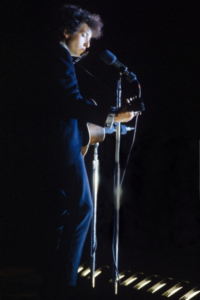
INFLUENCES ON JUST LIKE TOM THUMB’S BLUES
In Just like Tom Thumb’s Blues, many of Bob Dylan’s main influences – the blues, folklore, Beat, romantic and symbolist poetry and literature – come together to create one of his most powerful forays into the inner self. In this uncompromising and emotionally gut wrenching song, he explores the limits of the kind of hedonistic lifestyle which had been promoted by the Beats and which was now crossing over to a large section of American youth. In many ways the scenario that he creates resembles that of the final chapters of Kerouac’s On the Road which take place in Mexico and depict Sal Paradise and his friends indulging in drugs and prostitutes) and mirrors some of the similar settings in his 1965 novel Desolation Angels. To this Dylan adds layers of symbolism and some scattered literary allusions, so that the actions in the song – which are presented as a series of tableaux rather than a continuous story – can be interpreted in a number of ways. The song has been recorded many artists over the years, each of whom brings their own interpretation, from the relatively light touch provided by Bryan Ferry’s tastefully expressive version to the grungy rock of Neil Young to the personalised expression of pain that Nina Simone supplies.
Dylan, of course, never ‘explains’ his songs to audiences. But he loves to throw out false trails, especially when they have comic or surreal connotations. But before performing the song in Sydney in April 1966, he appears to provide the audience (which included a fairly large contingent that had come to protest against his move into ‘electric’ music) with an explanation of what the song is all about. He delivers what is presumably an improvised fantasy in the ultra-stoned mumble that characterises much of his pronouncements on this tour. With his sharp comic sensibilities in full effect here, what comes out of his mouth seems rather like a parody of the many crazed or ridiculous interpretations of his songs that were already circulating.
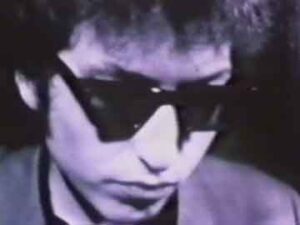
TOM THUMB’S BLUES – LOST IN THE RAIN
The opening lines of Just Like Tom Thumb’s Blues clearly establish that the subject of the song – who seems to be identical to the narrator – is in some kind of trouble: …When you’re lost in the rain in Juarez and it’s Easter time too/ And your gravity fails and negativity don’t pull you through… This character is ‘lost in the rain’. Dylan has always been fond of weather metaphors, as in A Hard Rain’s a-Gonna Fall, Shelter from the Storm and many other songs. Here the rain is clearly more than physical, representing a person who is spiritually lost or perhaps ‘drowned’. Easter is generally a sober event in most European and Protestant countries but in Mexico it the occasion of a week-long hedonistic celebration in which participants don outrageous masks and costumes. The highly unusual use of the terms ‘gravity’ and ‘negativity’ suggest that the narrator is under the control of powerful physical and emotional constraints. He then gives the advice not to …put on any airs when you’re down on Rue Morgue Avenue… implying that, given the state of his degradation, he cannot assume any air of moral superiority in this place. ‘Rue Morgue Avenue’ appears to be a playful reference to Edgar Allan Poe’s protean detective storyThe Murders in the Rue Morgue; thus suggesting that this is a very dangerous area.

TOM THUMB’S BLUES – HUNGRY WOMEN!
We will meet these ‘hungry women’ in the succeeding verses of Just like Tom Thumb’s Blues. It may be assumed that ‘Saint Annie’ and ‘Sweet Melinda’ are both prostitutes in one of Juarez’s brothels. However, it is possible that the ‘women’ are merely ciphers for different forms of narcotic. In the second verse Dylan switches pronouns, making what appears to be a personal confession. His ‘beatification’ of the first woman (giving her the name of the revered ‘Mother of Mary’) is clearly ironic, as his admonition to …Please tell her thanks a lot/ I cannot move, my fingers are all in a knot… He continues …I don’t even have the strength to get up and take another shot/ And my best friend my doctor won’t even tell me what it is I’ve got… These lines suggest that he has caught a venereal disease from her and is languishing in pain. In the studio recording, however, the narrator does not, sound angry or sarcastic. Rather he seems to accept his fate with some equanimity.
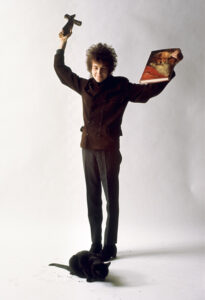
In the following verses of Tom Thumb’s Blues, the singer’s mind appears to drift away at times from Juarez …Up on Housing Project Hill, it’s either fortune or fame… uses a phrase from Desolation Angels. In Kerouac’s novel, the ‘angels’ are thinly disguised portraits of Kerouac and his fellow beats Allen Ginsberg, William Burroughs and Gregory Corso, whom he travels with. Juarez, like many American towns, certainly has a number of Housing Projects that have been built to house the poor. ‘Housing Project Hill’ may thus be an imaginary place where Dylan himself stands, looking down on the scenes he describes. This hints at a further interpretation of the song, which may also be seen as a depiction of the ‘false paradise’ of fame, with the archetypal female figures representing the temptations and paranoia that ‘fortune and fame’ may bring. Neither of them… Dylan sings …are to be what they claim… The mysterious lines that follow: …Now, all the authorities, they just stand around and boast/ How they blackmailed the sergeant-at-arms into leaving his post… seem to be referring to the notoriously corrupt local police.
LINKS
STILL ON THE ROAD – ALL DYLAN’S GIGS
THE CAMBRIDGE BOB DYLAN SOCIETY


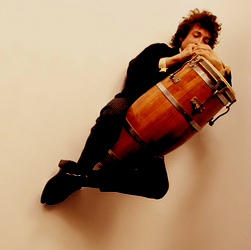
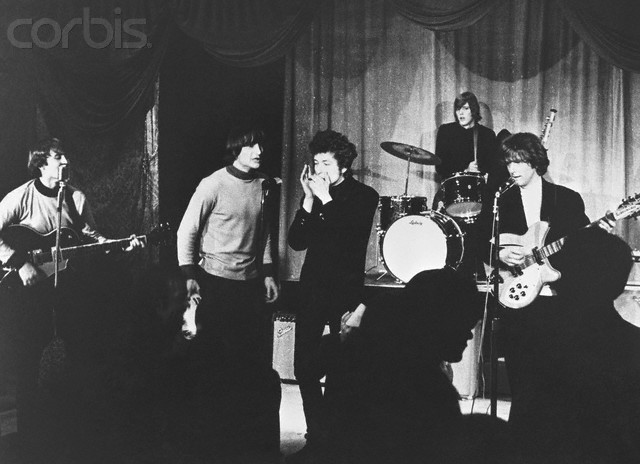 DYLAN AND THE BYRDS 1965
DYLAN AND THE BYRDS 1965
Leave a Reply